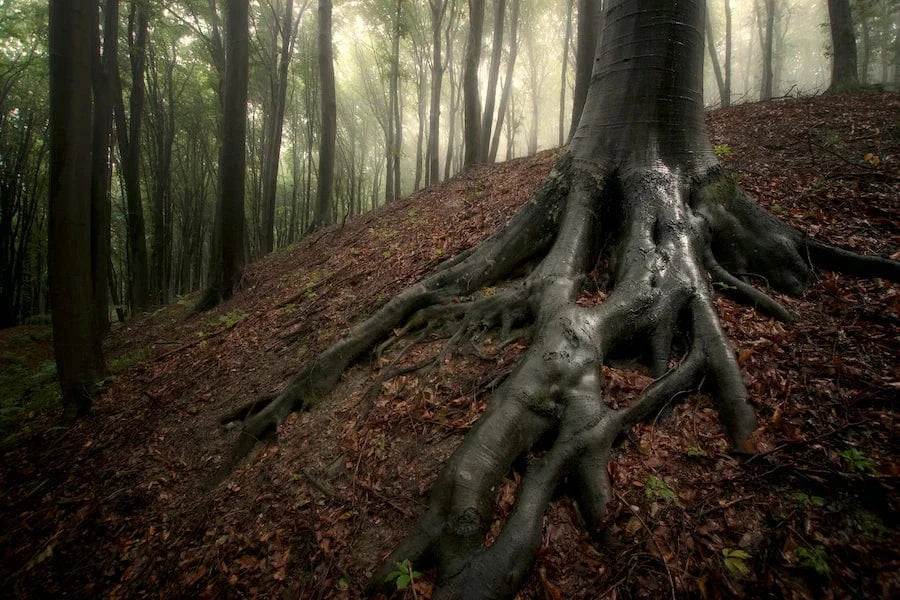
Get news, updates, & event Info delivered right to your inbox:
How Do Trees Grow? The Answer Might Surprise You!
Ever find yourself wondering how tiny seedlings transform into towering forests? From fast growing trees like fire cherry to slow and steady monoliths like white oaks, trees go through an incredible life cycle that begins with seeds and ends with decomposition. We think trees are pretty fascinating and worthy of taking a closer look. So watch our new short video to brush up on your tree ecology, and perhaps learn a thing or two!
How Long Does It Take For a Tree to Grow?
How Long Does It Take For a Tree to Grow?
Step 1. Dispersal
Every mighty tree began its life as a small seed, but each tree species has a unique seed dispersal strategy developed to maximize reproductive success by taking advantage of local ecological conditions. These include:

Step 2: Growing Roots
Once a seed has landed and been activated by environmental conditions like soil nutrients, water, temperature, or fire, germination — or soaking up water and splitting open — begins. After this, the first root, or taproot, works its way down into the soil, while the stem grows upward into the air, slowly lifting the seed case off the ground.
Pretty quickly, leaves begin to grow and unfurl, drinking in CO2 and sunlight — and eventually discarding the seed case. But the action doesn’t just happen above ground — below the surface, the taproot thickens and deepens, sending out tiny filaments that grab onto soil particles. Through this process, the tender seedling will grow into a hardy sapling with a woody single stem and tree-like leaves or needles.
From there, the tree sapling will slowly transform into a mature tree with a deep taproot and thick lateral roots that hold the topsoil together while nourishing the rest of the tree. In some areas, like tropical rainforests, where the soil is shallow and poor, trees will grow aerial, or buttress, roots aboveground to absorb oxygen and provide extra stabilization.

Step 3: Growth and Maturation
Guided by climatic conditions, trees typically grow in spurts of active expansion followed by periods of rest — in temperate regions, a full year’s growth can take place in just a few short weeks! And when it’s time to go dormant, leaves are folded in and waterproof buds formed to protect active growth areas. Speaking of growth, there are two kinds: expansion of roots and stems, and progressive thickening of tissue. And unlike humans and animals, trees only produce new cells in limited places called meristems.
Left alone, most trees can grow for centuries, gnarled bark slowly thickening and branches twining towards the sky.

Death and Decomposition
External stressors like floods, fires, strong winds, and poor soil that dislodge tree roots and send them crashing down, diseases and insect infestations that interfere with their ability to make and circulate food, water, and nutrients, and human activities like logging and deforestation, often kill trees before their time.
And although it’s true that snags can provide habitat for many species, entire ecosystems can collapse when too many trees are lost. After all, trees are good neighbors and provide vital services like soil stabilization, water absorption and release, help with air filtration, provide shade and shelter, are a source of food, assist with carbon sequestration, and so much more.
External stressors like floods, fires, strong winds, and poor soil that dislodge tree roots and send them crashing down, diseases and insect infestations that interfere with their ability to make and circulate food, water, and nutrients, and human activities like logging and deforestation, often kill trees before their time.
And although it’s true that snags can provide habitat for many species, entire ecosystems can collapse when too many trees are lost. After all, trees are good neighbors and provide vital services like soil stabilization, water absorption and release, help with air filtration, provide shade and shelter, are a source of food, assist with carbon sequestration, and so much more.
Trees are fascinating forms of life, and a closer inspection only confirms that fact. Want to help trees and nature? Plant trees today!
Get news, updates, & event Info delivered right to your inbox:
Related Posts
9 Sustainable New Years Resolutions
18/12/2025 by Meaghan Weeden
Inspirational Quotes About Trees
16/12/2025 by Meaghan Weeden
The 9 Oldest, Tallest, and Biggest Trees in the World
11/12/2025 by One Tree Planted
Popular On One Tree Planted
Inspirational Quotes About Trees
16/12/2025 by Meaghan Weeden
The 9 Oldest, Tallest, and Biggest Trees in the World
11/12/2025 by One Tree Planted
What Causes Deforestation?
10/07/2025 by Meaghan Weeden
Fundraising Disclosures

Be Part of the
Restoration Movement
The Grove is more than just a monthly giving program: it's a vibrant community of individuals who are dedicated to reforestation and environmental restoration on a global scale.
As a member of The Grove, you affirm your commitment to restoring forests, nurturing biodiversity, and fostering positive global change.



